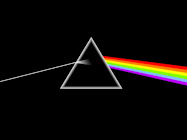An artist's rendering of the Phoenix lander. (NASA)
After living longer and doing more than anyone expected, the Phoenix Lander slipped away into the Martian night this month, never to talk to Earth again.
But for NASA scientists and employees at Danbury's Barden Corp., which produced some of the parts that allowed Phoenix to do its work, there was nothing but a sense of achievement.
"We are very proud of what it accomplished," Al Conti, a senior application engineer at Barden Corp. said this week. "The lander lasted a lot longer than expected."
"The team did a fantastic job, and the equipment performed longer than expected," Barry Goldstein, project manager at NASA's Jet Propulsion Laboratory in Pasadena, Calif., said. "The project was better than expected."
The Phoenix Lander, launched on Aug. 27, 2007, landed safely on Mars on May 25, 2008, far closer to the Martian northern pole than any spacecraft before it.
Then scheduled to work for 90 Martian days -- each 24 hours and 39 minutes long -- it made it to 152 Martian days.
"We got an extra 62 days out of the mission," Goldstein said.
Its most spectacular achievement was to reach out with its mechanical arm and scoop up samples of Martian soil, then analyze the chemical composition of that soil onboard the spacecraft.
Along with the soil, Phoenix scooped up samples of ice, proving conclusively there is still water, albeit frozen water, on Mars.
"It found H2O," Goldstein said, which is
important because water is the basis of all life on Earth.
Barden is one of the world's leading producers of super-precision ball bearings. It was those bearings that allowed Phoenix's arm to reach out and scoop so successfully.




No comments:
Post a Comment